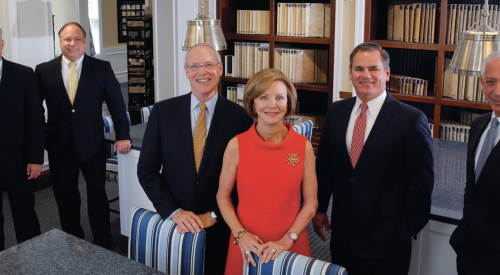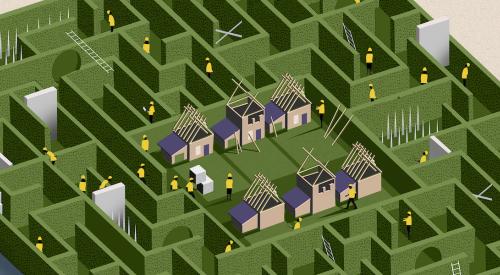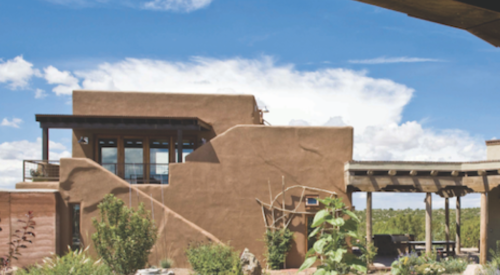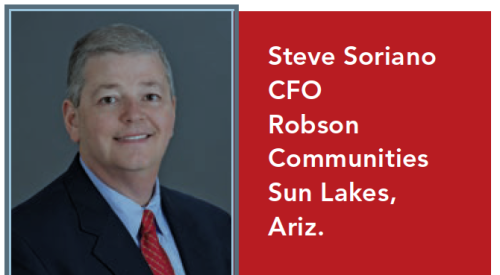He has further extended his influence by forming the Earth Society, a nonprofit teaching and development entity where developers, builders, environmentalists, government employees, educators and students can share ideas. His philosophy is that the future of housing must be a joint venture between home builders and environmentalists against no-growth elitists.
But Rose is not a man with his head in the clouds. He is a businessman with his roots firmly planted in the reality of building houses in the 1990s. He has successfully transformed his lofty vision into housing developments. Sensitivity to the market requires his executives to take what he calls a comprehensive approach to projects.
"Starting with the land, we mold and shape a plan to take full advantage of everything this precious resource has to offer. But this resource does not exist in a vacuum, so the market potential, political sensitivities, neighborhood necessities and other pertinent factors are incorporated into the final design. The result is a synergistic community that lies within its own natural environment, comfortably with its neighbors."
PROFESSIONAL BUILDER: How did you get started in the home building business?
MICHAEL ROSE: It's the only job I ever had is the simplest way to put it. When I was 13 years old I cleaned model homes. When I was 16 I waxed the salesmen’s cars. When I went to college I worked part time as a security guard; then I started selling houses part time. Then I went full time. One thing led to another. From 1966 to 1973 I was senior group vice president of marketing for Larwin; I had the New York region, Washington, D.C., Maryland and Virginia as well as northern Illinois, California and Las Vegas. From 1973 to 1975 I was executive vice president of Carl Freeman & Associates of Potomac, Maryland. The company was a home builder who did second-home communities and custom homes. I opened my own company in 1975.
When did your concentration on green building begin?
I have always liked trees and the environment. When you live in California there are not as many trees and it is not as pretty. One of the things that impressed me when we went back east was all the great trees. When talking to customers, I found out that they would pay more for a lot with trees. As a builder, it costs me money to chop down trees, so I could be good to the environment and practice good economics at the same time if I figured out how to save trees, sell houses faster and make customers happy.
We were the first ones back in 1975 to emphasize saving trees. We would go into local government offices with our tree surgeon and landscape architect and say this is the land plan we want to do and this is the environmental habitat. They would throw us out and tell us to bring back our engineer. Now 25 years later, we are very fashionable, and my tree surgeon is called an urban forester, so I have to pay him twice as much money as I used to.
How did the evolution of green building take place?
Maryland’s Prince George County was the first local government with a tree ordinance, and six years ago the state followed. The ordinance required that there be a 20-foot circle without trees around the house. Now others across the country have tree ordinances as well.
One thing all these states discovered is that their rules required builders to take down trees. Thirty-two- and 34-foot-wide streets required more trees to be taken down. The requirement for huge storm water retention ponds often means getting rid of trees, when the best method of storm water management is to have it flow through trees.
Builders prefer saving trees if they possibly can. The three-part program used by our company includes saving, transplanting and planting because they’re a renewable resource. We get requests all the time from various cities asking us to come tell them how we do it. We helped write a book called "Building Greener Neighborhoods."
Builders’ attitude toward saving trees was different 25 years ago, but they simply reflected the opinions of planning commissions and local county councils, which I describe as the flat-earth theory. Everything was flat before they started, and everything would be flat afterward. They never looked at creating an environment with trees and people and birds and fish -- a whole ecosytem.
Where is the home building industry now in the green building time line?
We are still in our infancy. About 20% of today’s residential communities are actually working on being green. There will be a lot more change in the next 10 years than there has been in the past 10 years. It has taken this long to get a critical mass of projects where people can learn and understand how to make green building and development work. Now builders are working to find the best way to implement these concepts in their neighborhoods.
Governments are another factor in the slow progress of green building. Once local governments find out that these concepts work, they must change their regulations to make green development easier. That way, not everything would have to be done through grant waivers.
The time for change is now. Green building and Smart Growth are converging issues now. Builders and developers can do a more sensitive job in both regards if we’re allowed to cluster houses and create more open space.
Where does the Earth Society fit into the whole picture of green building?
The object of the Earth Society, which was started last year, is to become a nonprofit teaching and development entity that helps people shares ideas. We have 35 founding fellows. That includes builders and developers as well as people from the Environmental Protection Agency and other environmental groups. We will have two series of classes beginning in September and October to teach people how to save and transplant trees.
I believe that true environmentalists and developers -- in some kind of joint venture -- are going to be the answer for the future. We’re the ones with the solutions to stop the no-growthers who want everything to be the way it is.
DOSSIER: Michael T. Rose
Company: The Michael T. Rose Cos. are in three businesses: land development, which used to be 50% of the work and is now down to 30%; development consulting (10%), in which Rose assists other landowners, such as Xerox, Exxon and various financial institutions; and custom home building (60%), 45 to 50 a year, priced from $500,000 to $1 million, and waterfront condominiums for second-home buyers (30 units a year). The web site is http://www.mtr.com.
Personal: Michael has been married to Carol for 33 years. Son Marc is in the custom home division. Son Gregg is a golf doctor at the Natural Health and Sports Clinic in Rockville, Md. Michael has been in a wheelchair since 1978, when a man on drugs walked into the office and started shooting, severing Michael’s spine. He is active in the disabled community, serves on the executive committee of the NAHB and was founding chairman of the NAHB environmental committee. He is also on several other committees.
Just for Fun: Reading (mysteries are his favorite), travel and charity work. "The trip we remember the most is when we took the kids on a five-week driving tour across the United States."











